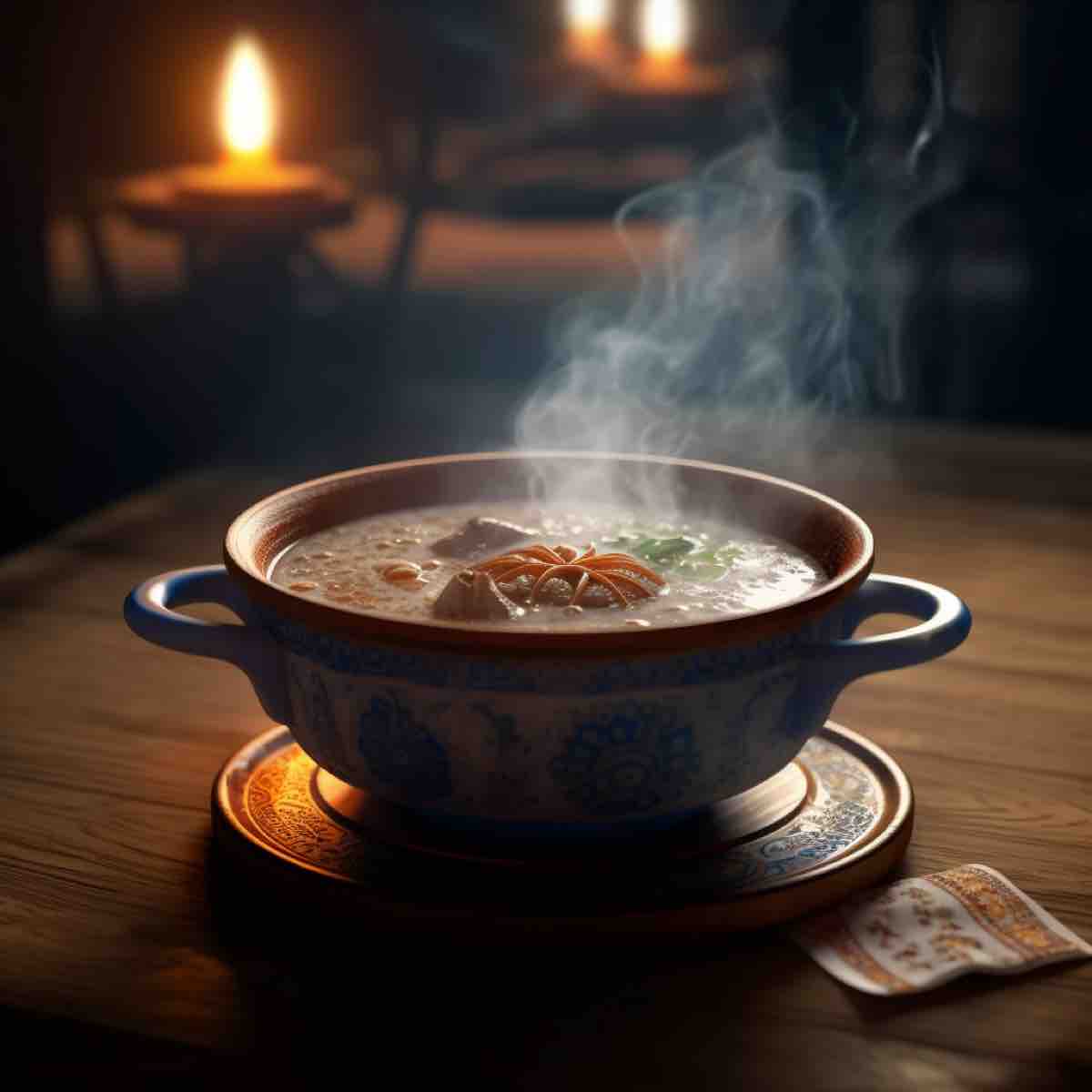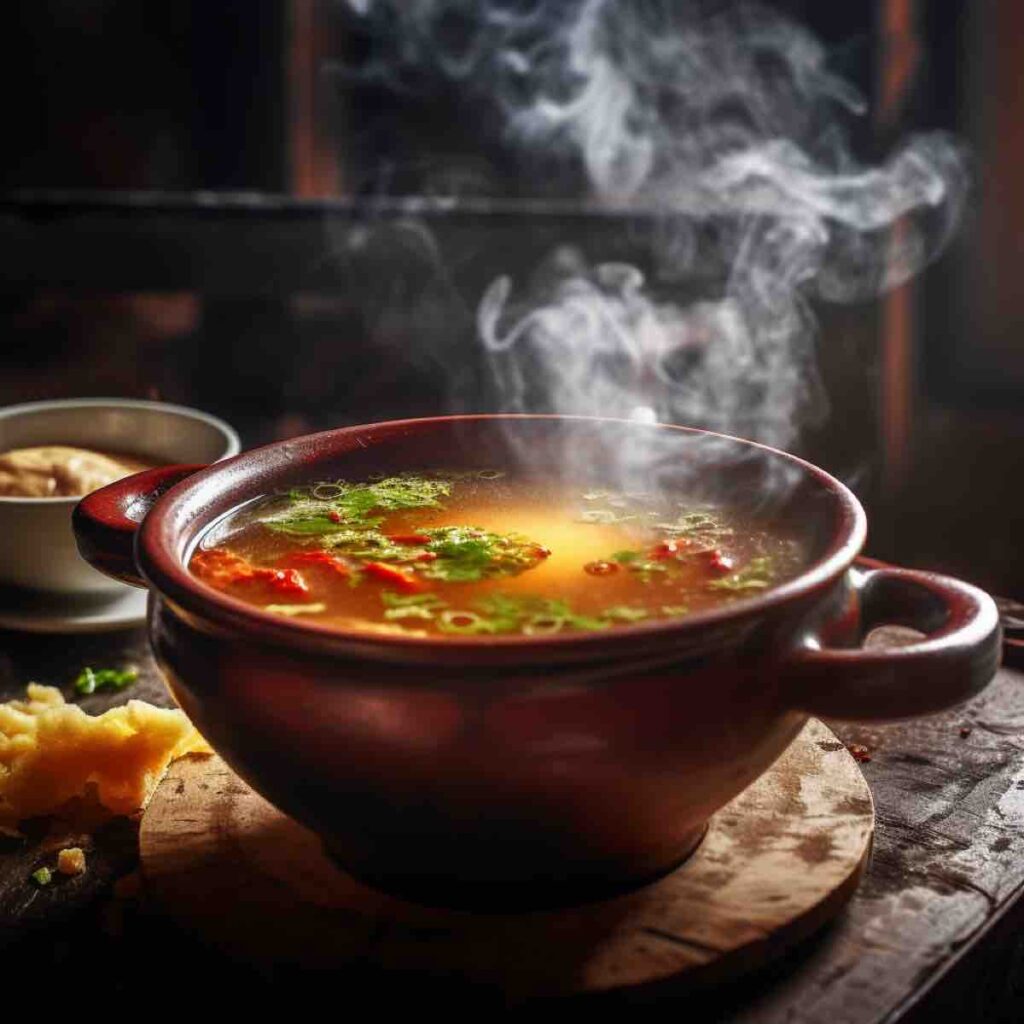Substituting Milk in Soup: Can Almond Milk Be Used?

Are you looking for a dairy-free alternative to milk in your soup recipes? Almond milk might be the solution you’re looking for. Almond milk is a plant-based milk that is made by blending almonds with water and straining the mixture to remove the solids.
It has a creamy texture and a slightly nutty flavor that can add a unique twist to your soups.
When it comes to substituting almond milk for dairy milk in soup, the answer is yes, you can. Almond milk can be used as a substitute for dairy milk in most soup recipes. It can add a creamy texture and a nutty flavor to your soup without overpowering the other ingredients. However, it’s important to keep in mind that almond milk has a thinner consistency than dairy milk (see a similar approach for no milk pasta) , so you may need to adjust the amount of liquid in your recipe to achieve the desired consistency.
Key Takeaways
- Almond milk can be used as a substitute for dairy milk in most soup recipes.
- Almond milk has a thinner consistency than dairy milk, so you may need to adjust the amount of liquid in your recipe to achieve the desired consistency.
- Almond milk can add a creamy texture and a nutty flavor to your soups.
Substituting Almond Milk in Soup
If you want a dairy-free alternative to regular milk in your soup, almond milk could be a great option. Here are some things to consider when substituting almond milk in soup.
Benefits of Using Almond Milk
Almond milk is a plant-based milk substitute with a creamy texture and a slightly nutty flavor. It is low in calories and carbs and high in healthy fats, fiber, and nutrients like calcium and vitamin E. Almond milk is vegan, gluten-free, and suitable for lactose intolerance or nut allergies.
How to Substitute Almond Milk for Dairy Milk
When substituting almond milk for dairy milk in soup, use a 1:1 ratio. If you use unsweetened almond milk, you may need to add a thickening agent like cornstarch to achieve the desired consistency. Sweetened almond milk may be too sweet for savory dishes, so it’s best to use unsweetened varieties.
Tips for Cooking with Almond Milk
Here are some tips for cooking with almond milk in soup:
- Dilute the almond milk with water if you want a thinner consistency.
- Use unsweetened almond milk to avoid added sugar.
- Add the almond milk towards the end of cooking to prevent curdling.
- If using sweetened condensed almond milk, reduce the amount of added sugar in the recipe.
- If using store-bought almond milk, check the label for carrageenan, a thickener that some people may be sensitive to.
Overall, substituting almond milk in soup is a great way to make your dish dairy-free and plant-based. With these tips in mind, you can create a delicious and nutritious soup that everyone can enjoy.

Almond Milk vs. Dairy Milk
Nutritional Differences
When it comes to nutritional content, almond milk and dairy milk have some notable differences. While dairy milk is a good protein, calcium, and vitamin D source, almond milk is generally lower in calories and fat. However, dairy milk also contains cholesterol, which is not present in almond milk.
Almond milk is often fortified with vitamins and minerals, including calcium and vitamin E, to make up for its lower natural content. However, it is important to note that almond milk is not a significant source of protein, which may be a consideration for some people.
Flavor and Consistency Differences
Almond milk and dairy milk are quite different in terms of flavor and consistency. Dairy milk has a creamy, rich flavor and a thicker consistency, while almond milk is lighter and slightly nutty. This can make a difference when substituting almond milk for dairy milk in recipes, particularly in dishes that rely on the creaminess of dairy milk.
It is also worth noting that almond milk may not behave exactly the same way as dairy milk when heated, which can affect the texture of soups and other dishes. However, many people find that almond milk works well as a substitute in many recipes, particularly those that are naturally lighter in texture.
Overall, while almond milk and dairy milk have some differences in nutritional content, flavor, and consistency, they can often be used interchangeably in recipes with good results. If you are considering substituting almond milk for dairy milk in soup, it may be worth experimenting to find the right balance of flavor and texture for your tastes.
Other Milk Substitutes
If you’re unable to use almond milk as a substitute in your soup, there are several other milk alternatives that you can try. Here are a few options:
Soy Milk
Soy milk is a popular milk substitute and is widely available in most grocery stores. It has a mild flavor that won’t overpower your soup’s taste. Soy milk is also a good source of protein and calcium, making it a healthy option. However, it may not be the best choice if you have a soy allergy.
Oat Milk
Oat milk is a great option if you’re looking for a creamier consistency in your soup. It has a slightly sweet taste that can complement savory dishes. Oat milk is also high in fiber and can help lower cholesterol levels. However, it may not be suitable for those with gluten intolerance.
Coconut Milk
Coconut milk is a rich and creamy alternative to dairy milk. It has a distinct flavor that can add a tropical twist to your soup. Coconut milk is also a good source of healthy fats and can help boost your immune system. However, it may not be the best choice if you’re watching your calorie intake.
Rice Milk
Rice milk is a good option if you’re looking for a neutral flavor that won’t alter the taste of your soup. It’s also low in fat and calories, making it a healthy choice. However, rice milk is not a good source of protein and may not provide the same thickening effect as dairy milk.
When choosing a milk substitute for your soup, it’s important to consider the flavor, consistency, and nutritional content. Each milk alternative has its own unique properties that can affect the taste and texture of your soup. Experiment with different options to find the one that works best for you.
Baking with Almond Milk
Substituting Almond Milk in Baking Recipes
If you’re looking for a dairy-free alternative to traditional milk in your baking recipes, almond milk can be a great substitute. It’s a plant-based milk that is low in calories and fat, making it a healthier option for those who are watching their weight. Almond milk can be used in place of dairy milk in most baking recipes, but there are a few things to keep in mind.
First, it’s important to choose unsweetened almond milk when baking. Sweetened almond milk contains added sugar, which can affect the taste and texture of your baked goods. If you need a sweeter flavor, consider adding honey or another sweetener to your recipe.
Second, when substituting almond milk for dairy milk, it’s important to keep in mind that almond milk is thinner than dairy milk. This means that you may need to adjust the amount of liquid in your recipe or add a thickener like Greek yogurt or sour cream to achieve the desired consistency.
Recipes Using Almond Milk
Here are a few recipes that use almond milk as a dairy-free alternative:
- Almond Milk Pancakes: These pancakes are light and fluffy, and the almond milk adds a subtle nutty flavor. To make them, simply substitute almond milk for dairy milk in your favorite pancake recipe.
- Almond Milk Waffles: Like pancakes, waffles can also be made with almond milk. The result is a crispy, golden waffle with a nutty flavor that pairs well with fruit and syrup.
- Almond Milk Muffins: Almond milk can also be used in muffins. Try substituting almond milk for dairy milk in your favorite muffin recipe, and add in some chopped nuts for extra crunch.
- Almond Milk Baked Goods: Almond milk can be used in a variety of baked goods, including cakes, cookies, and bread. When substituting almond milk for dairy milk in these recipes, be sure to adjust the liquid accordingly and add a thickener if necessary.
Overall, almond milk can be a great dairy-free alternative for baking. It’s important to choose unsweetened almond milk, adjust the liquid and thickness as needed, and experiment with different recipes to find what works best for you.
Frequently Asked Questions
Can almond milk be used in soup?
Yes, almond milk can be used in soup as a substitute for dairy milk. It is a great option for those who are lactose intolerant or have a milk allergy. Almond milk has a nutty flavor that can add a unique taste to soups.
What can I use instead of milk in soup?
There are several alternatives to milk that you can use in soup. Some of the popular options include soy milk, coconut milk, oat milk, and rice milk. These non-dairy milk options can provide a similar creamy texture and flavor to your soup.
Can non-dairy milk be used in soup?
Yes, non-dairy milk can be used in soup. They are a great option for people who are lactose intolerant or have a milk allergy. Non-dairy milk can provide a creamy texture and flavor to soups, just like dairy milk.
What is a good milk substitute for soup?
The best milk substitute for soup depends on your personal preference and the type of soup you are making. Soy milk, coconut milk, and oat milk are popular options that can provide a creamy texture and flavor to your soup. Almond milk is also a great option if you prefer a nutty taste.
How can I thicken soup without using milk?
There are several ways to thicken soup without using milk. You can use cornstarch, flour, or potato starch to thicken your soup. Simply mix a tablespoon of the starch with some cold water and add it to your soup. You can also use pureed vegetables like potatoes or carrots to thicken your soup.
What are some alternatives to dairy milk in soup?
Some alternatives to dairy milk in soup include soy milk, coconut milk, oat milk, rice milk, and almond milk. These non-dairy milk options can provide a similar creamy texture and flavor to your soup. You can also use vegetable broth or pureed vegetables like potatoes or carrots to add creaminess to your soup.
